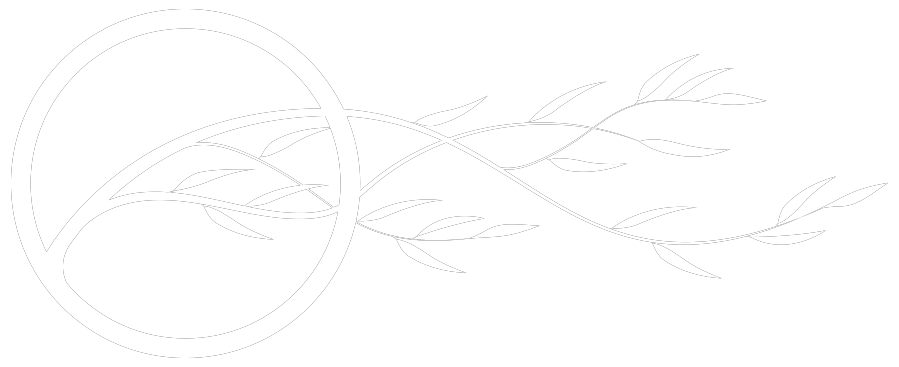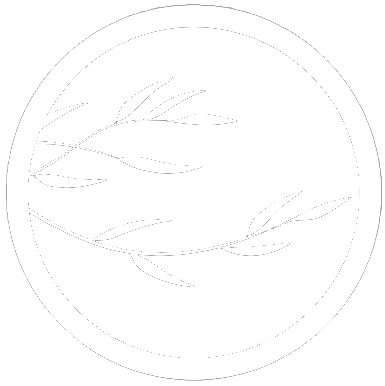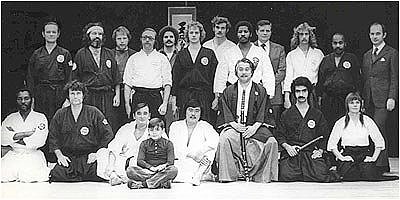
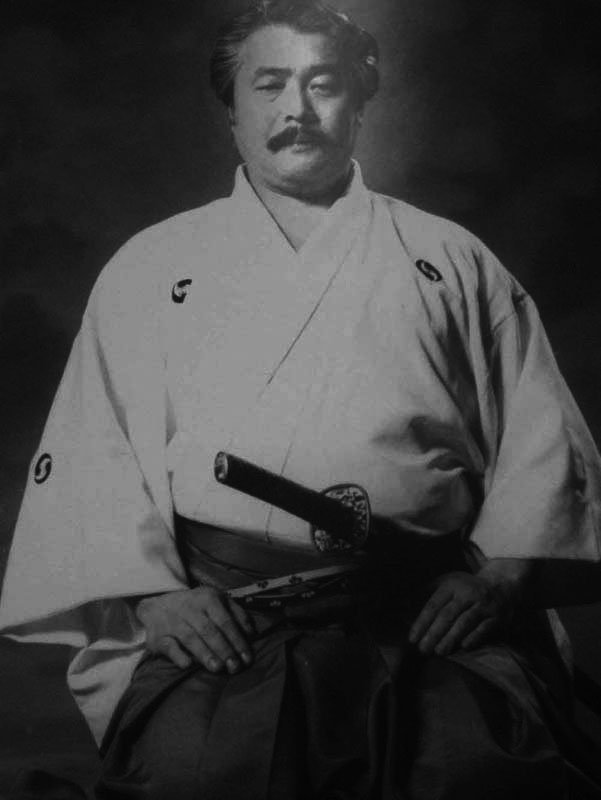

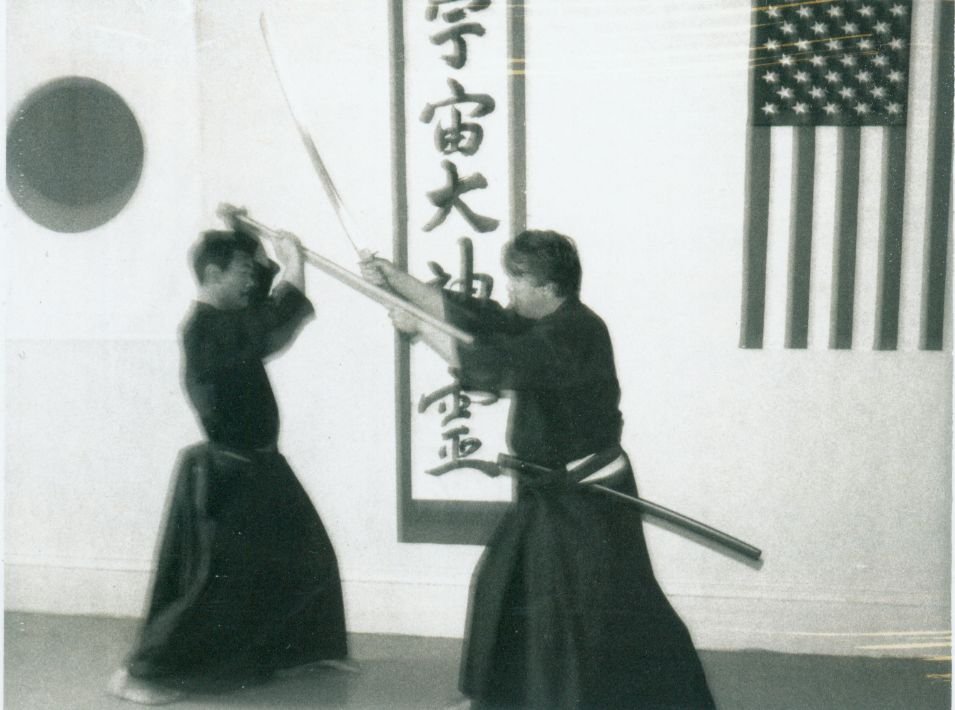
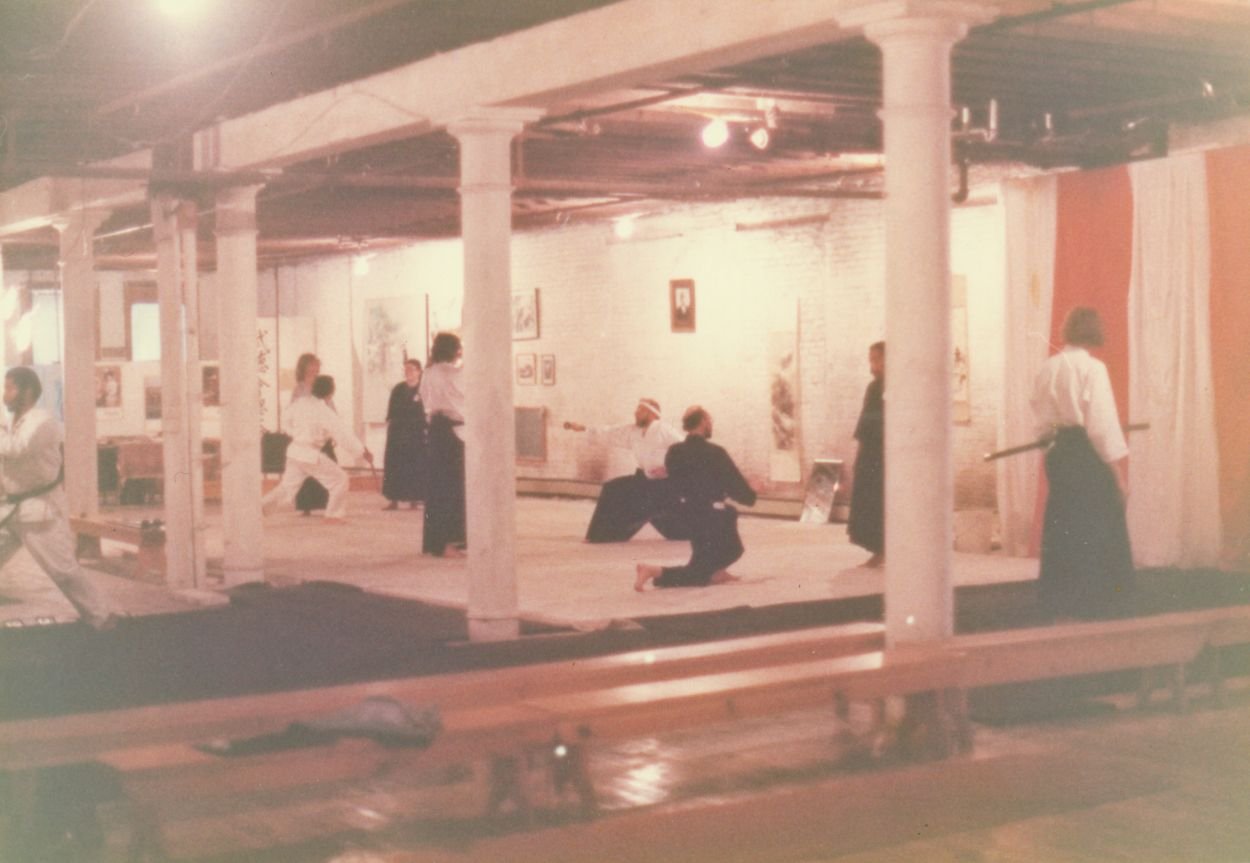

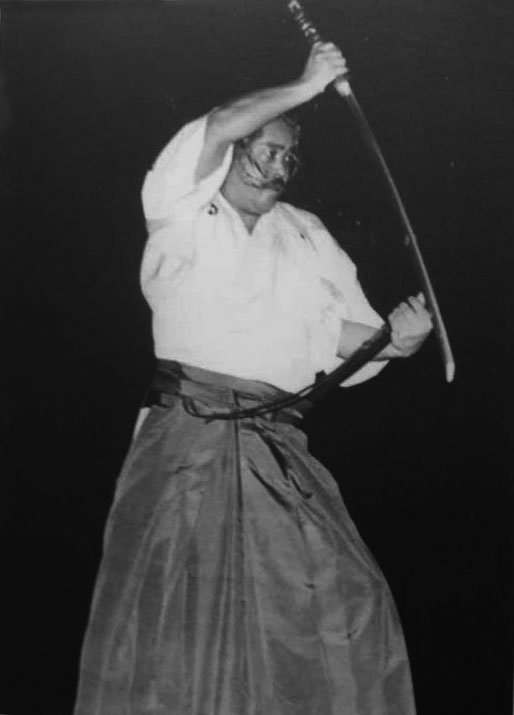

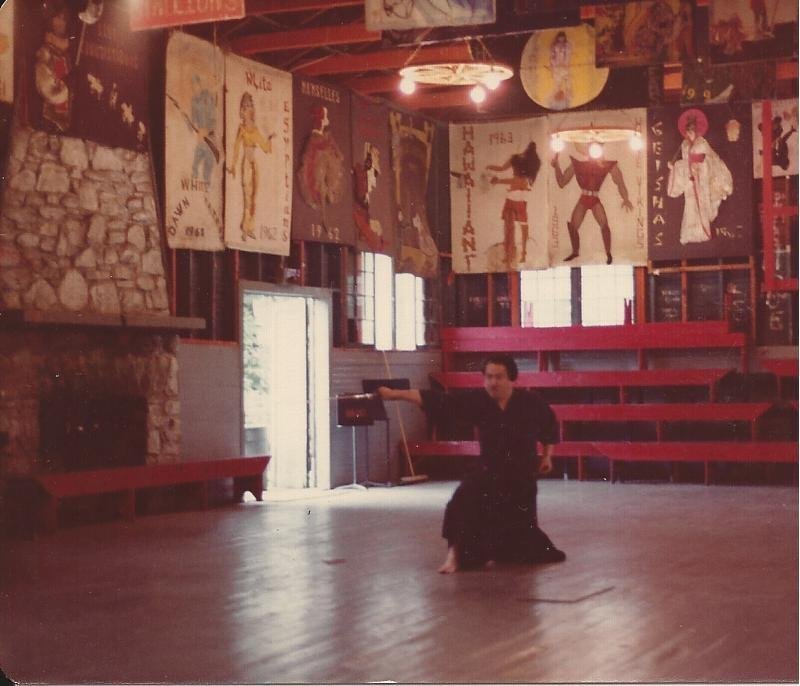


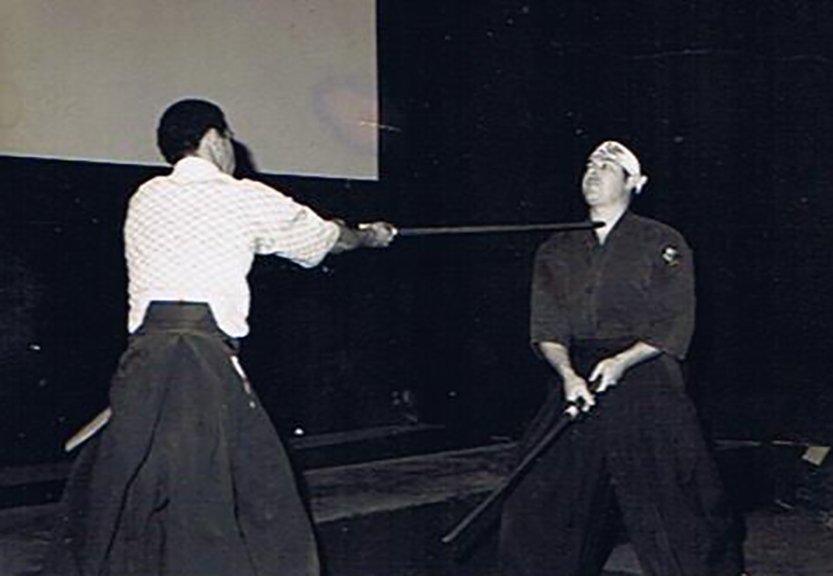
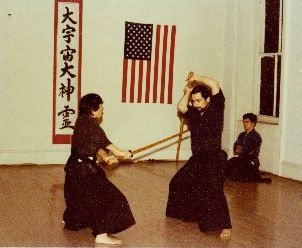
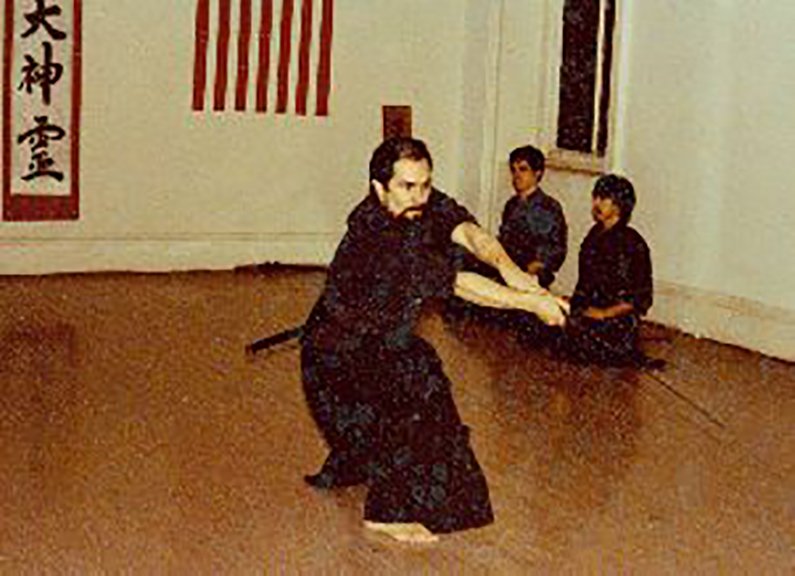
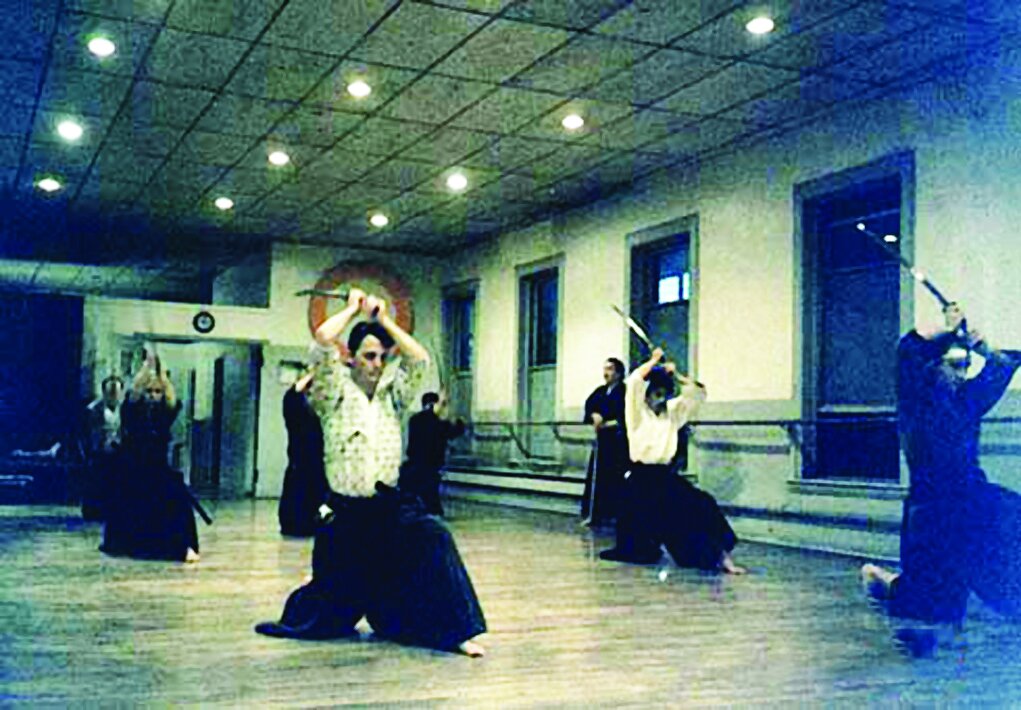

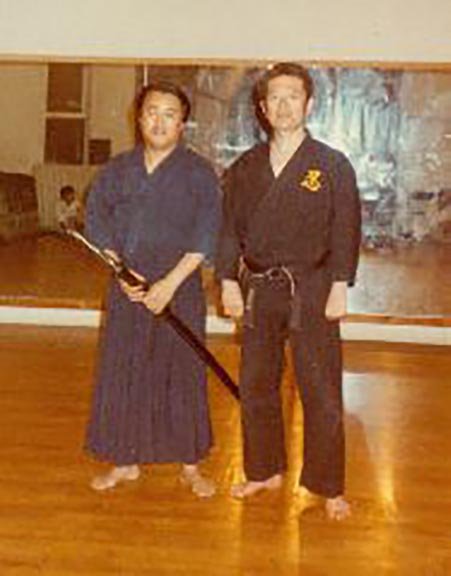
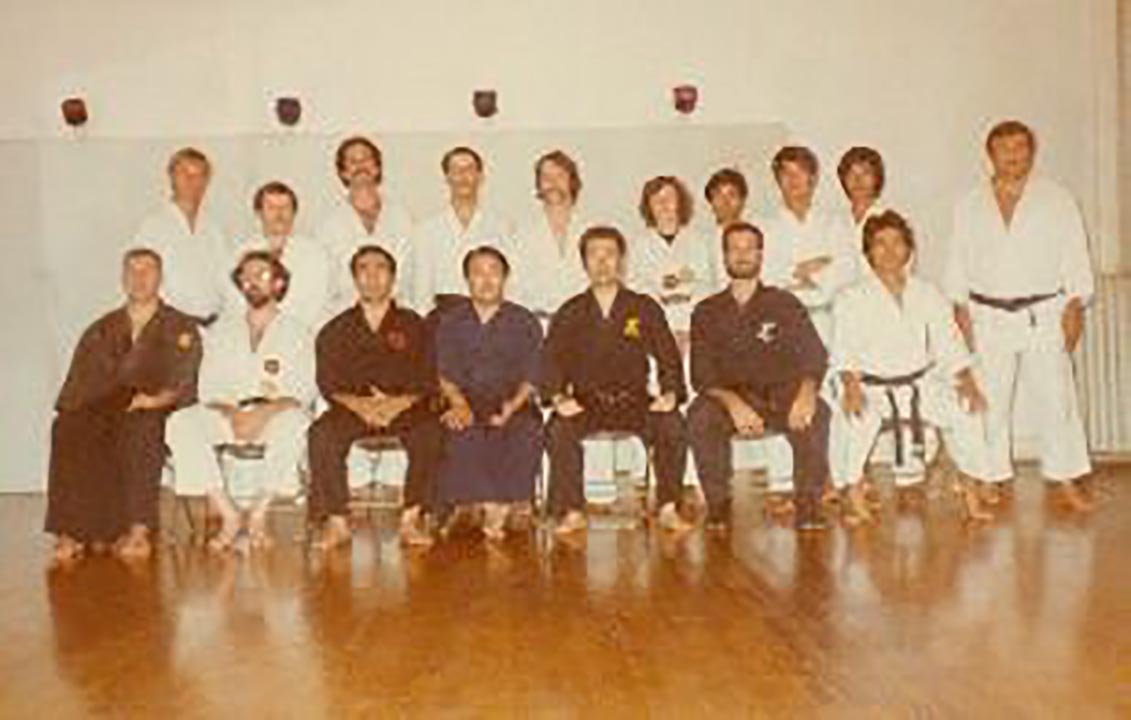
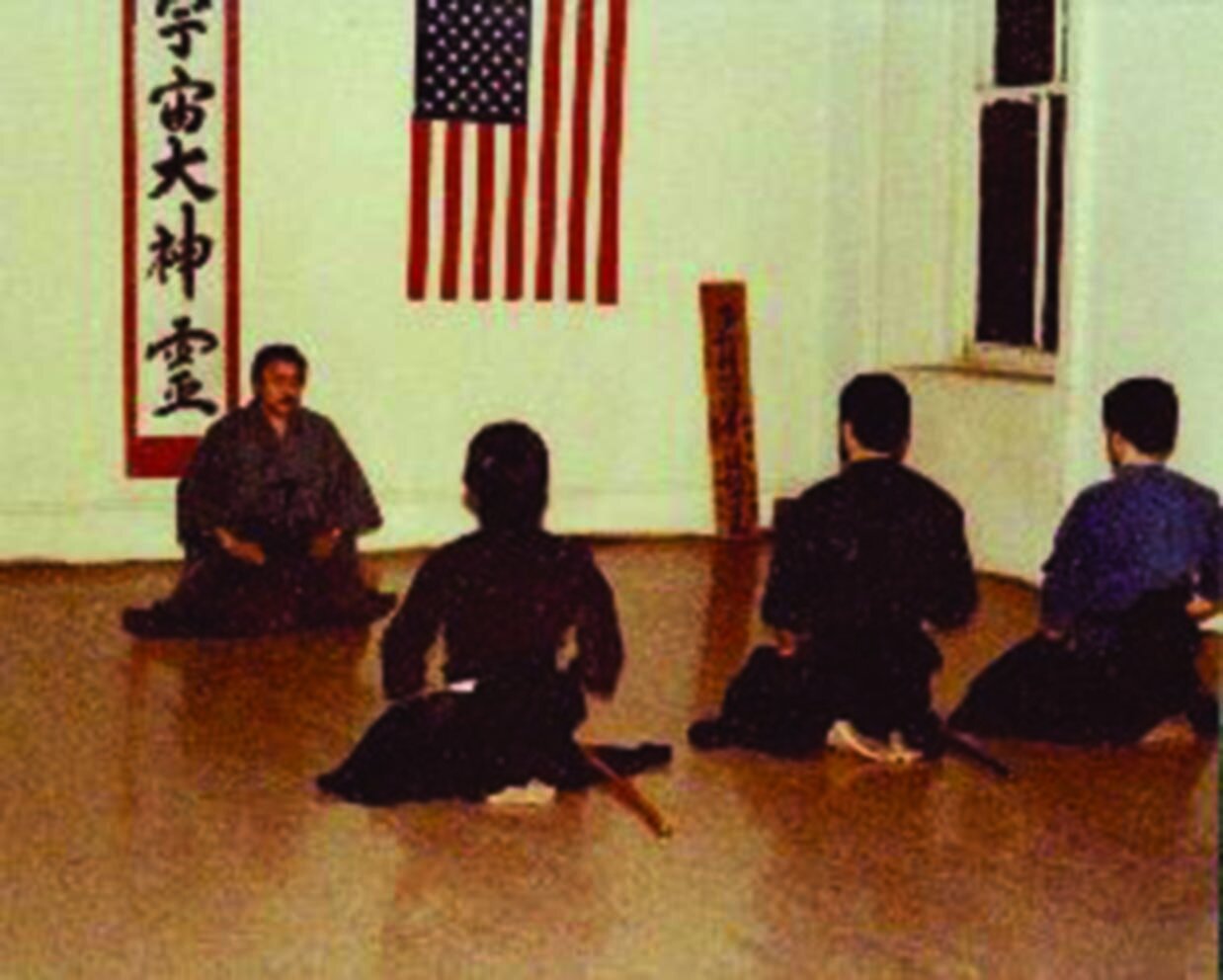
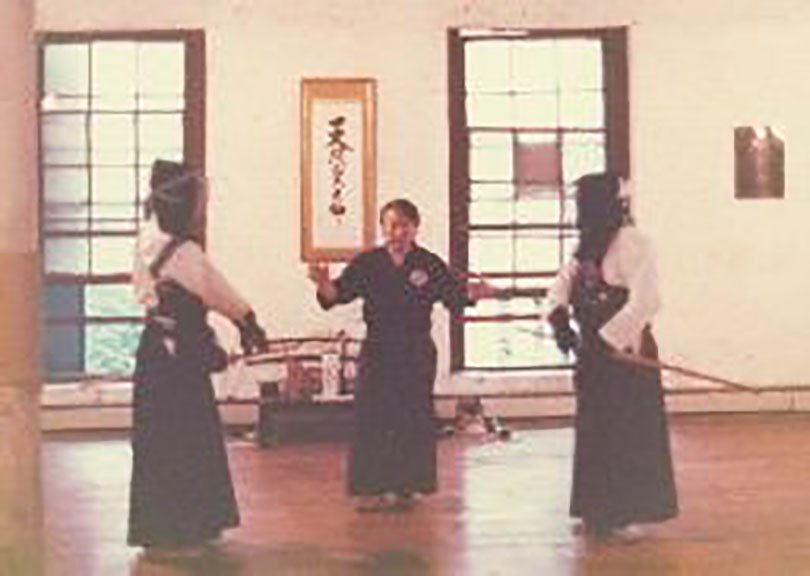
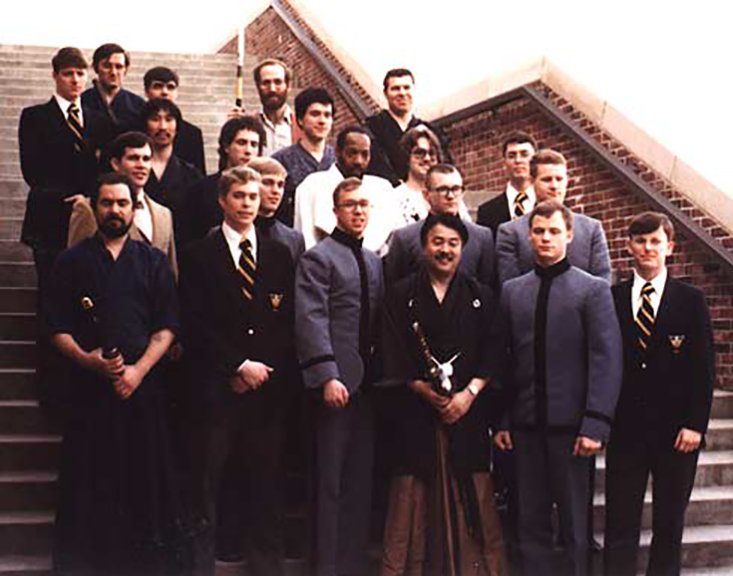
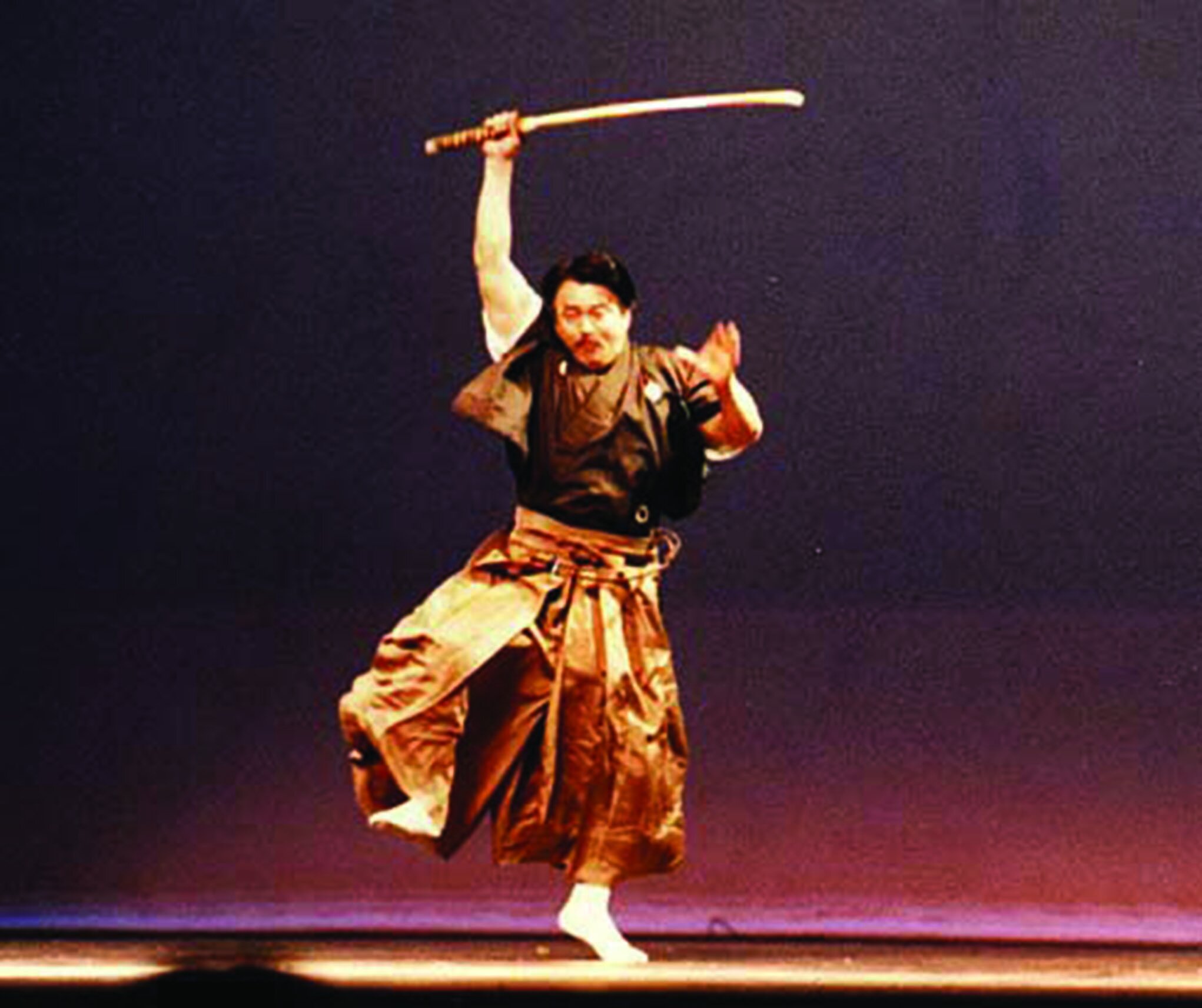
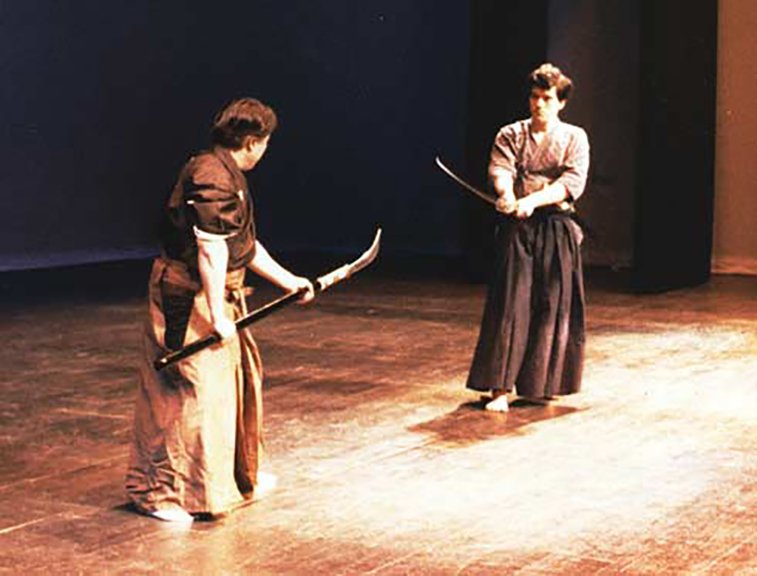
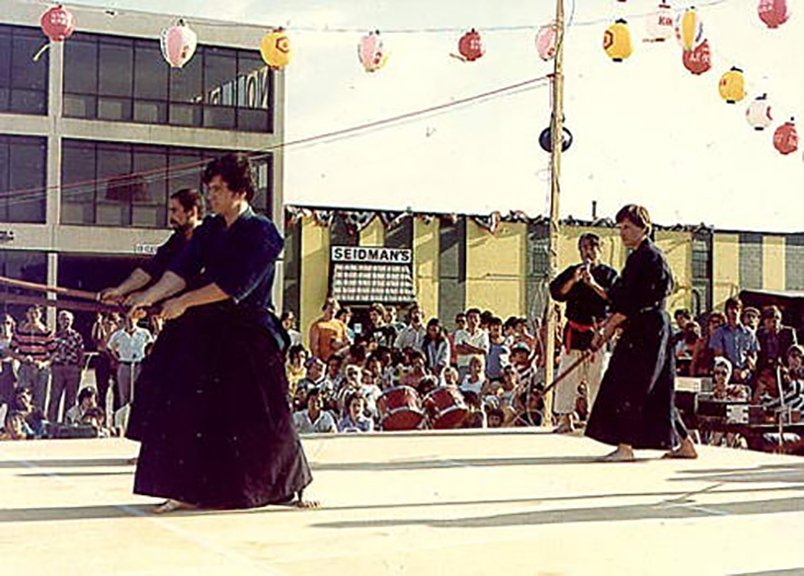
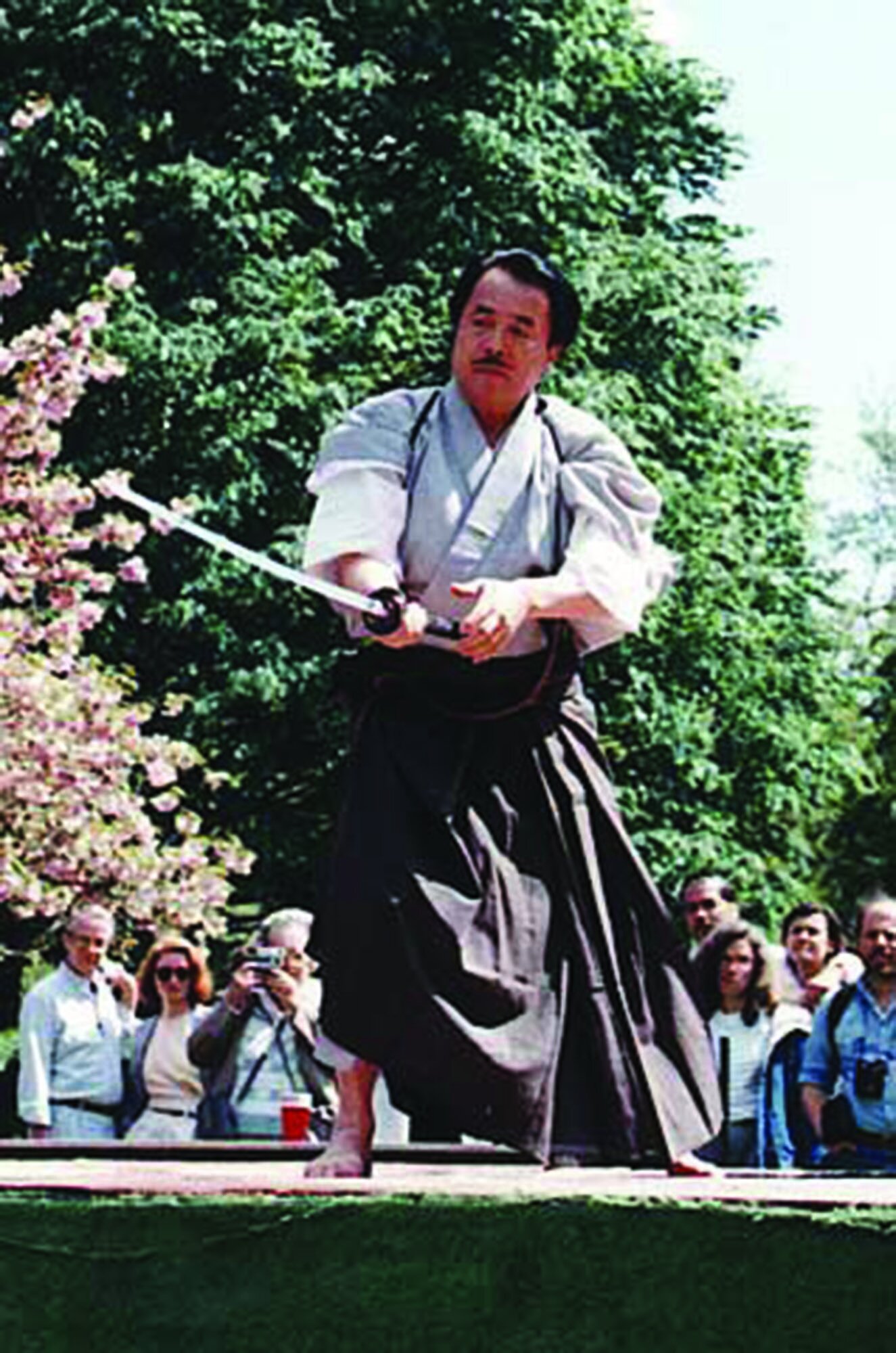
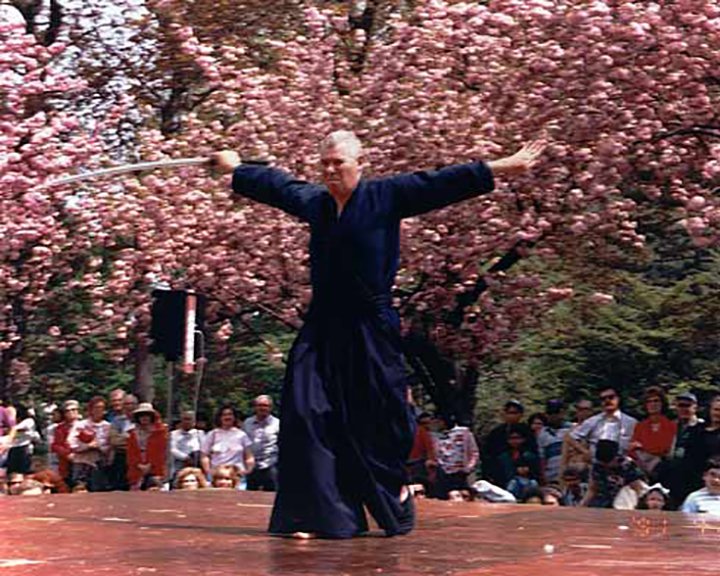

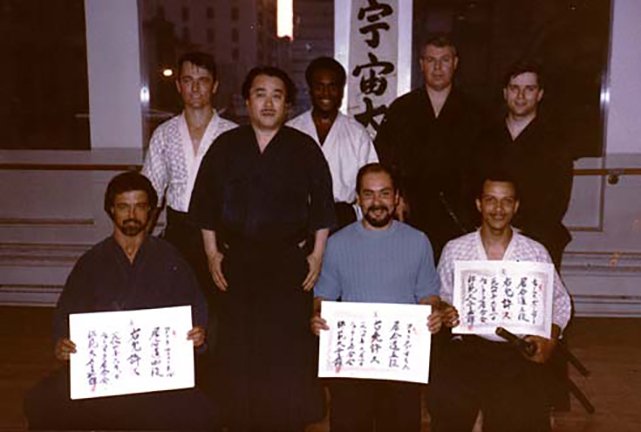
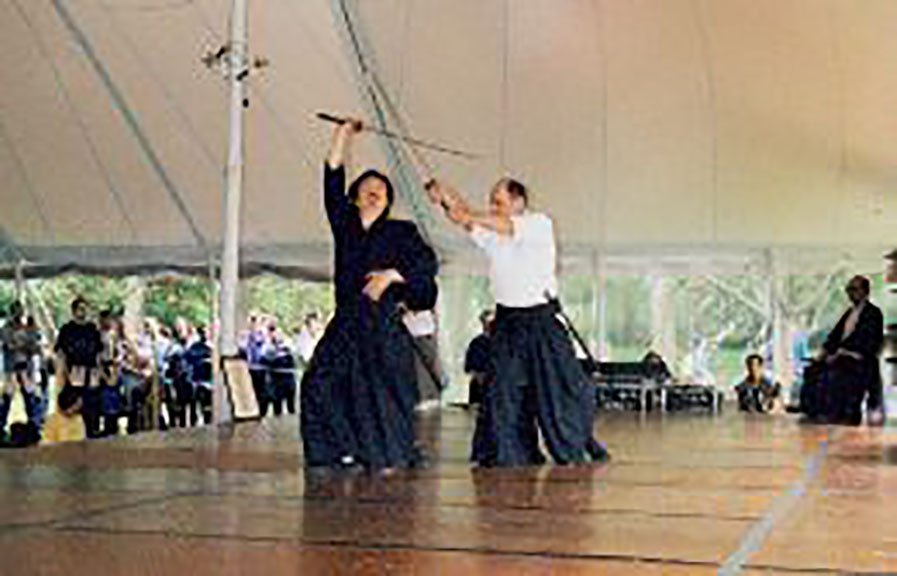
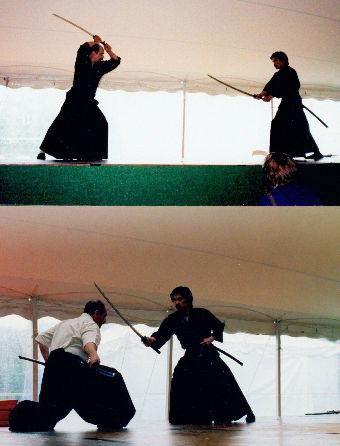
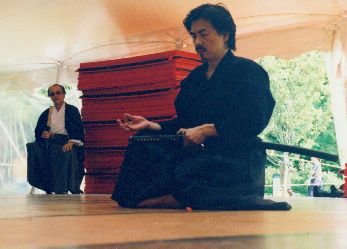

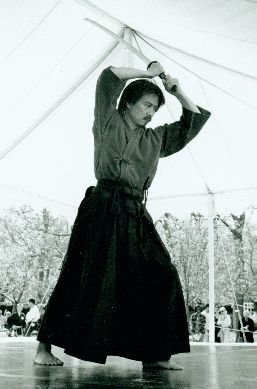
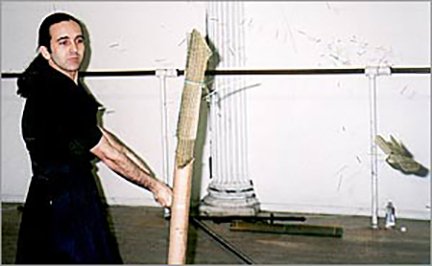
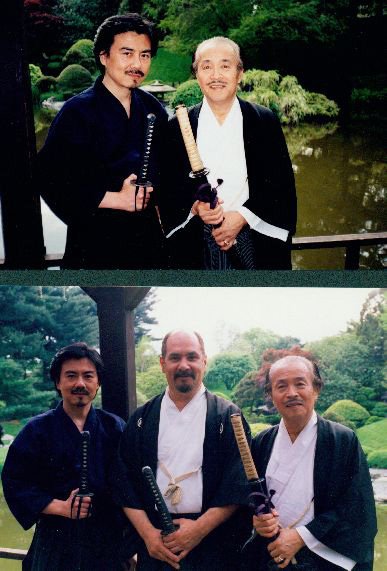
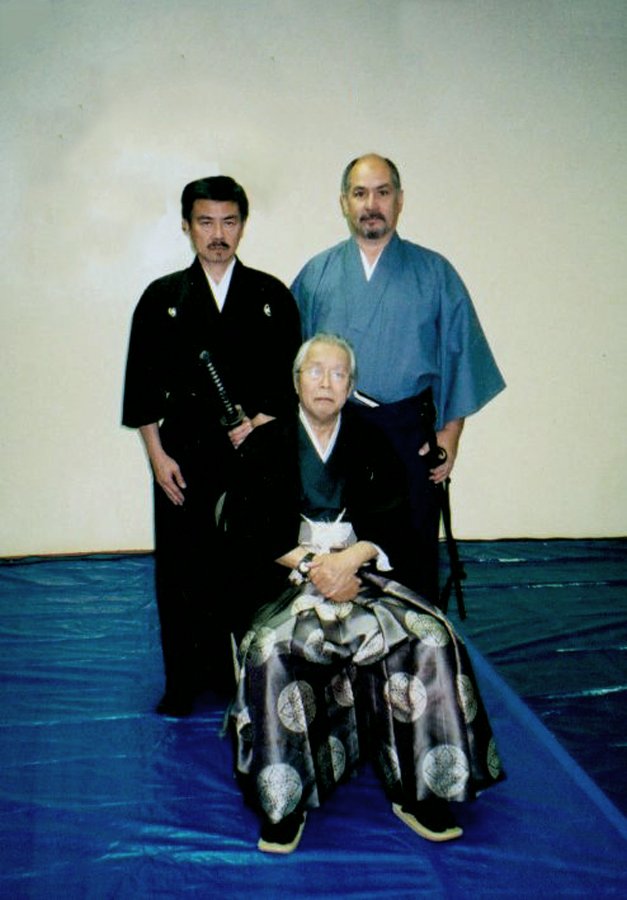

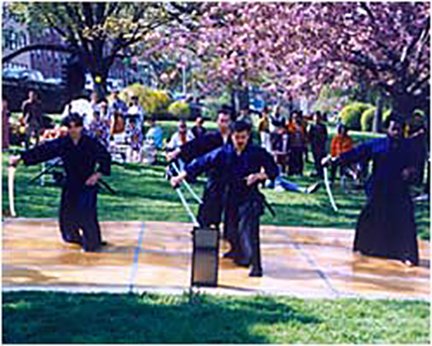
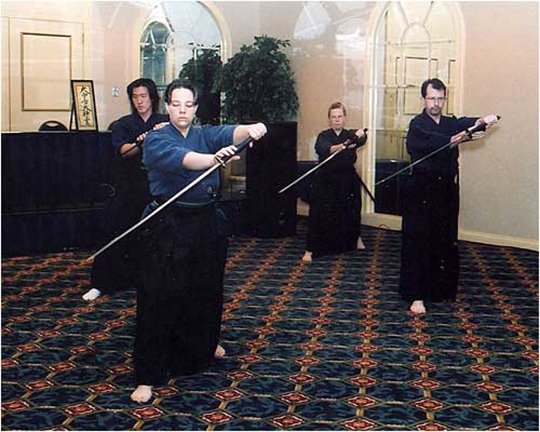


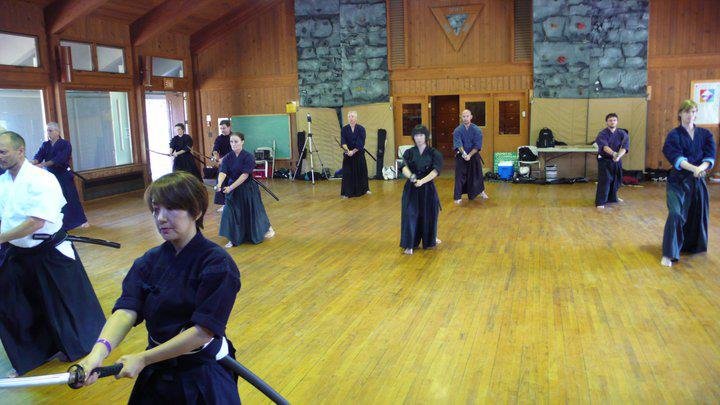

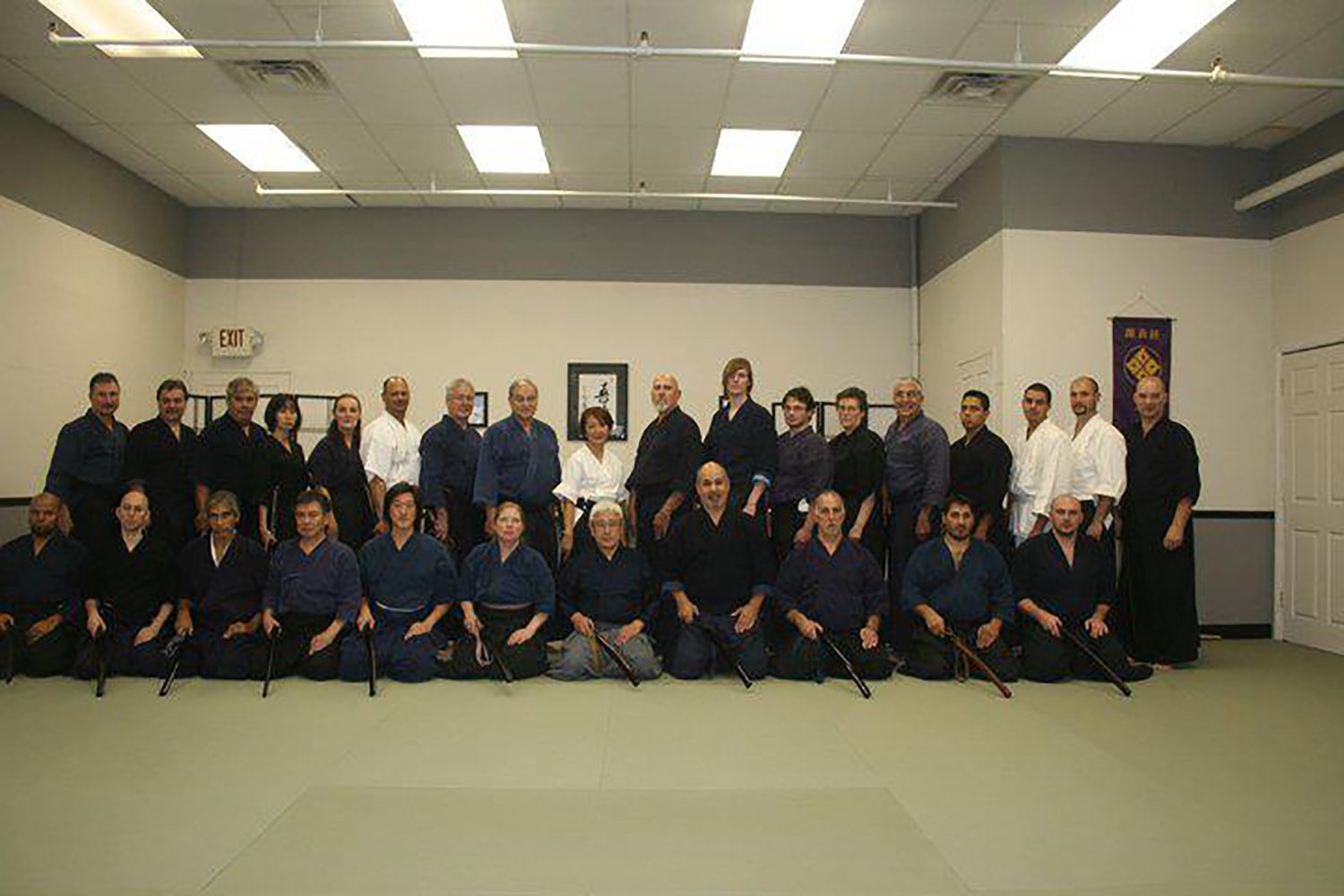
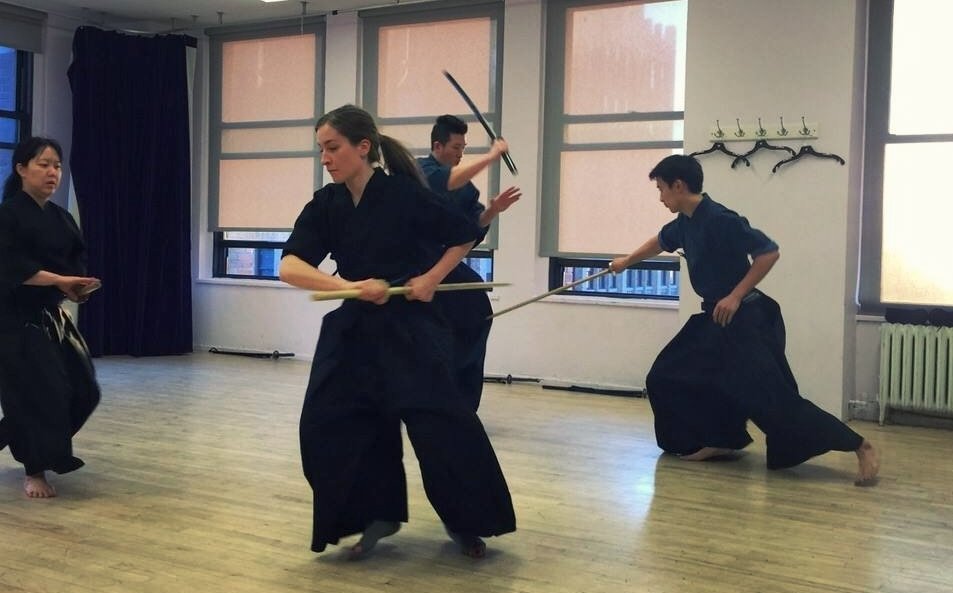


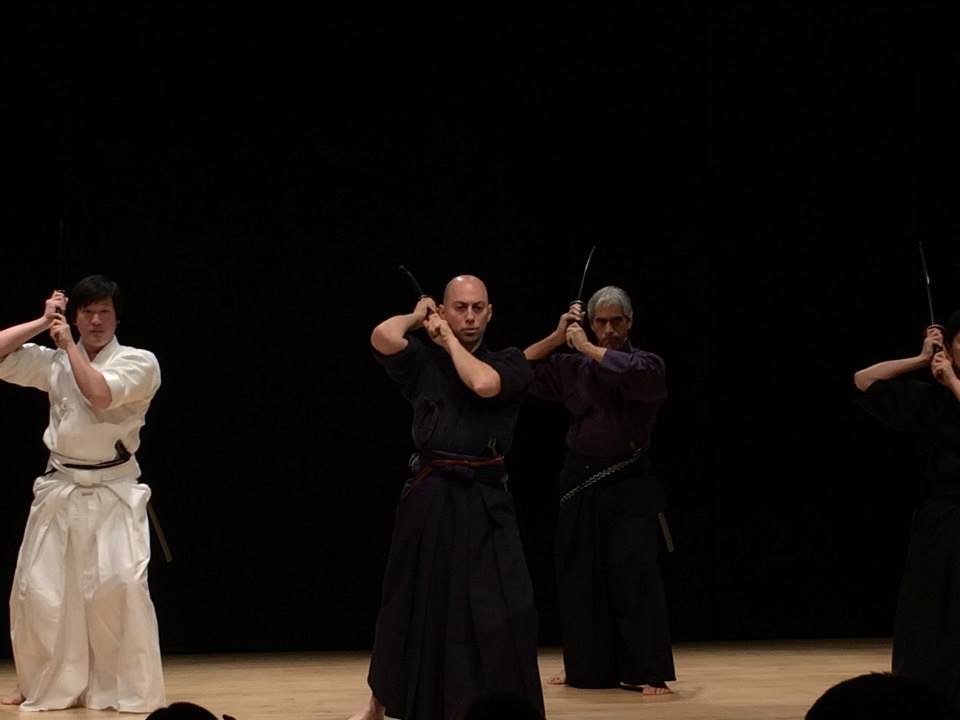
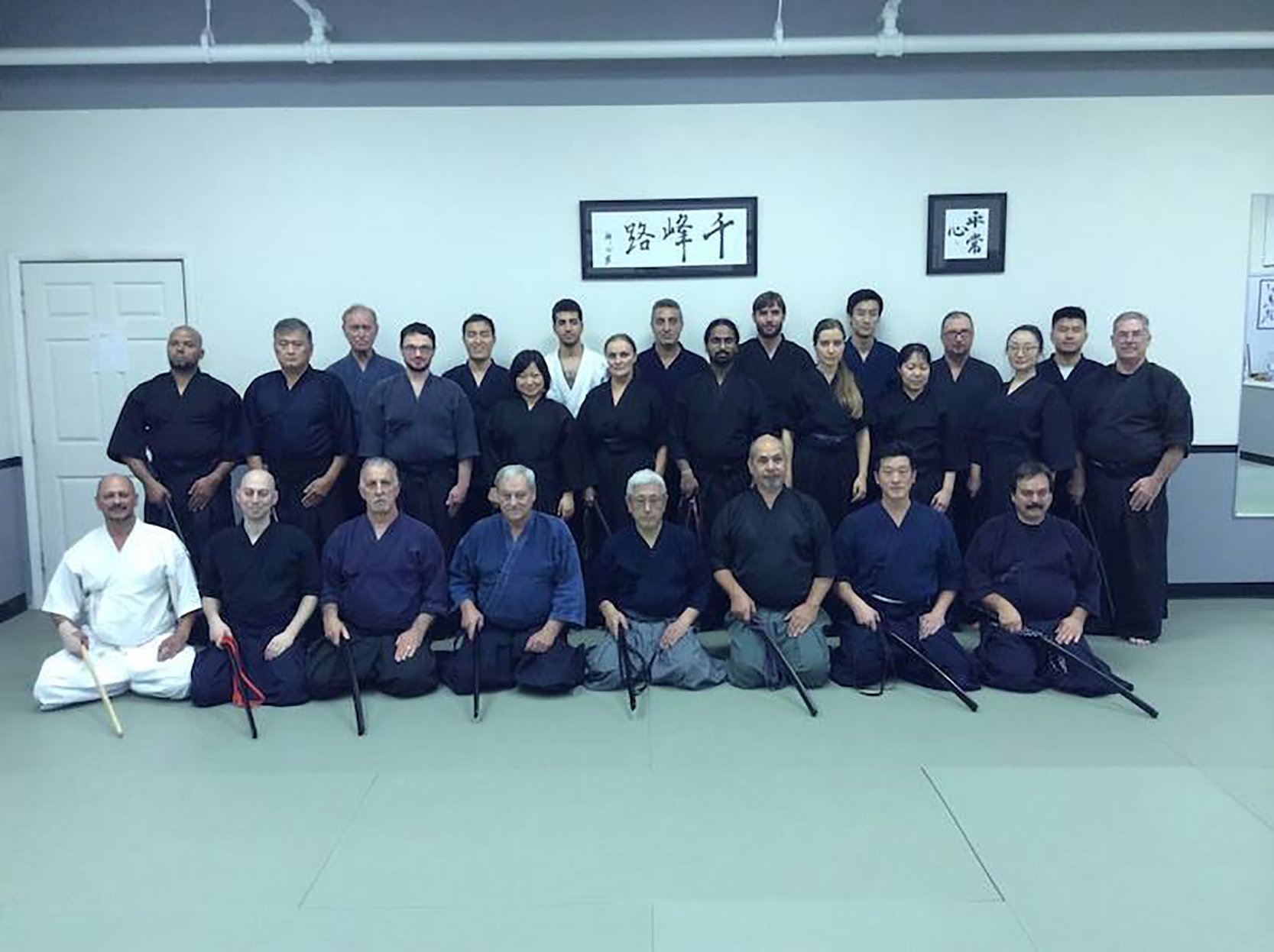
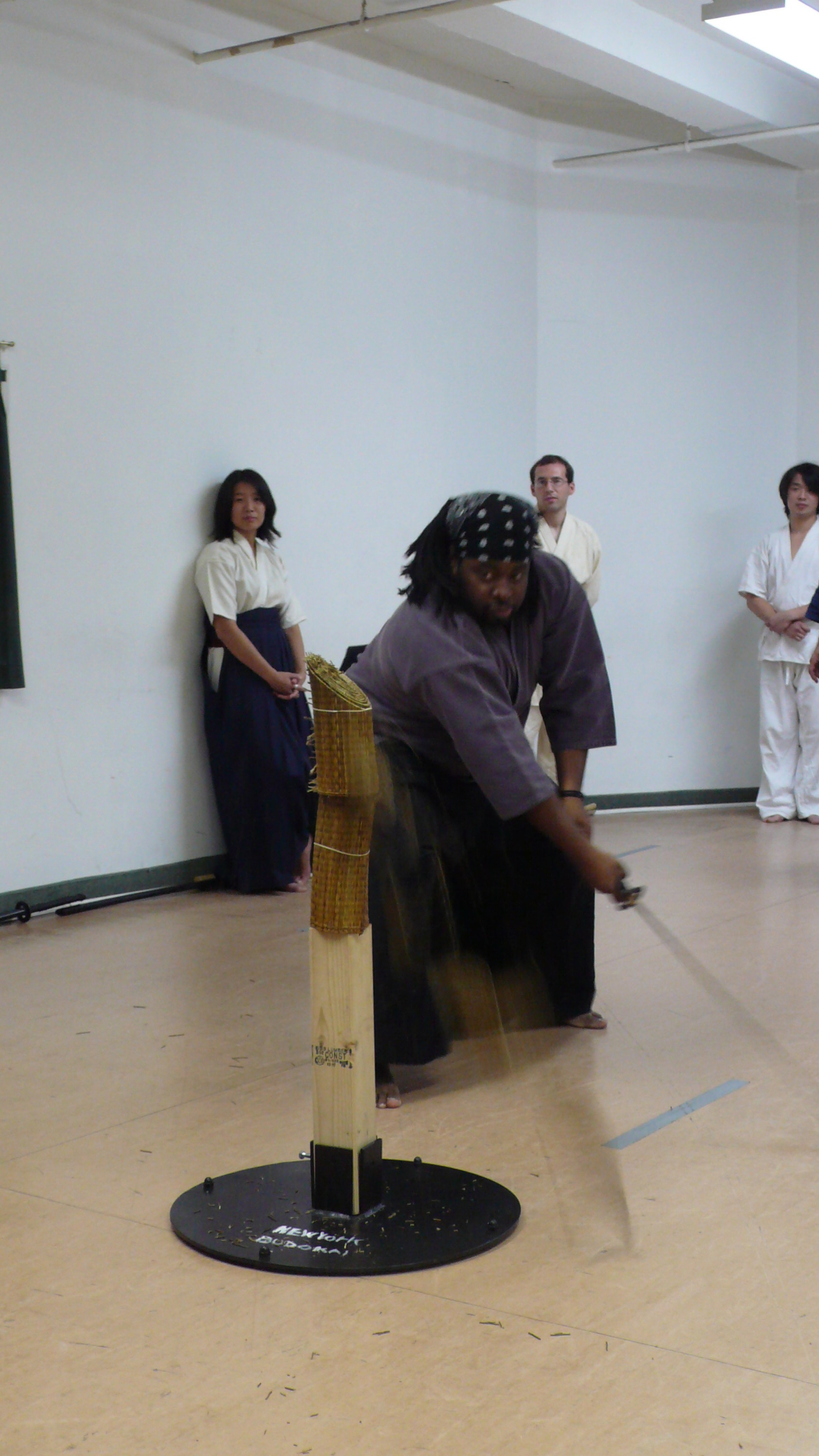
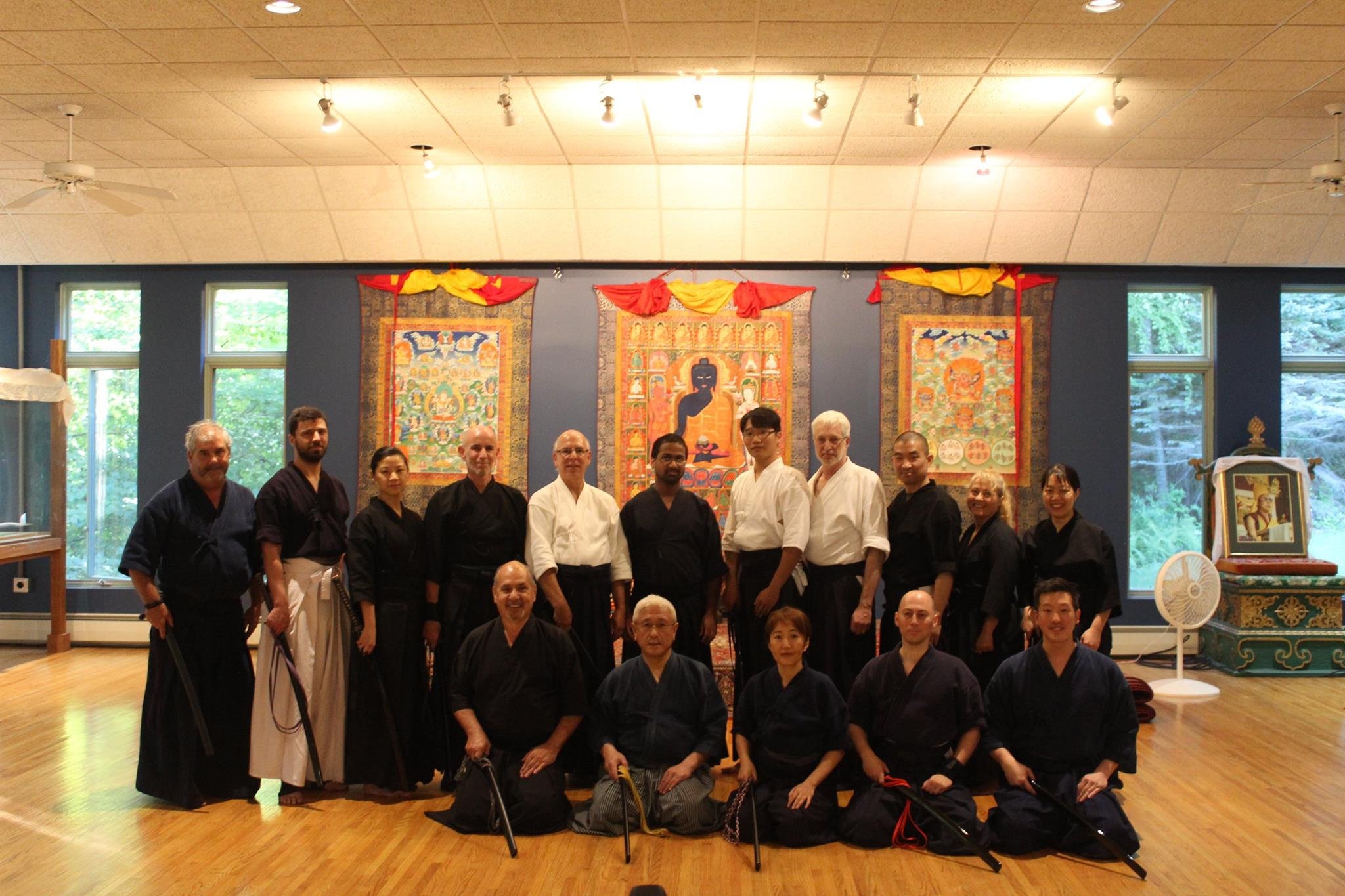
HISTORY OF THE NEW YORK BUDO ASSOCIATION
Original writing by Stanley Chin (Interview and collaboration with Phil Ortiz.
Research material from Yoshiteru Otani’s personal archive. Edited by Charlotte Colavin.)
56 years ago Sensei Yoshiteru Otani came to this country and introduced it to Iaido and The Moving Zen. His students from New York Budokai will continue to honor his spirit and mission of keeping Iaido alive by teaching “the art of the sword that gives life.”New York Budokai was founded by Sensei Yoshiteru Otani as New York Iaikai in the early 1960ʼs. Otani Sensei had arrived in the United States from Osaka, Japan in 1954. He came from a Samurai lineage to this country as a highly skilled Iaido practitioner
(Art of the Japanese Sword). In addition he made an extensive study of Zen philosophy.
At the time of Senseiʼs arrival, the United States was being introduced to the philosophy of the Samurai, through several films which explored the art of the Japanese sword. The 1954 Seven Samurai, directed by Akira Kurosawa and the 1955 Samurai 1: Musashi Miyamoto directed by Hiroshi Inaki. The films contained powerful cinematic scenes that moved many to seek out the philosophy of the Samurai and to become interested in the sheer beauty of the art of the Samurai sword – Iaido. The popularity of these films paved the way for Otani Sensei to become the pioneer Iaido Instructor on the East Coast.
In 1963 he began teaching Judo (which was already popular in the US) at the McBurney YMCA in NYC, his true mission was to introduce Iaido and Zen philosophy. In the late 1960ʼs he gave a lecture/demonstration called “Zen Philosophy and The Samurai Spirit”. The WAY OF THE SWORD was launched in New York City.
In the early 70ʼs, Otani Sensei joined a group of elite martial arts instructors to form The Japan Cultural Center known as the “largest martial arts school in the USA”. Three floors of Japanese masters. Judo: Sadaki Nakabayashi – 9th degree; Karate: Shigeru Numano – 5th degree (East coast Karate champion); Kenpo: My asami Kudo – 4th degree; Kendo and Iaido: Yoshiteru Otani – 7th degree Kendo, 8th degree Iaido.
A few years later Otani Sensei left The Japan Cultural Center to form his own dojo, New York Iaikai teaching Muso Shinden Ryu Iaido (live blade), Kendo (bamboo shinai) and Shindo Muso Ryu Jodo (short staff). Among his early students was Tom Dreitlein (Ajo) and Phil Ortiz, the present head instructor of New York Budokai. Tom, along with being a fine practitioner also documented the Zen theory and philosophy and transcribed Japanese texts for the dojo. He also wrote the official New York Iaikai dojo manual; An Introduction to the Technique and Principle of Japanese Fencing. (copyright 1978).
Otani Sensei led New York Iaikai members to demonstrations all over the East coast. Among the highlights was an exhibition for faculty and cadets at West Point Academy in 1978 during which Sensei addressed a 4,500 seat audience. The lecture/demonstration was enthusiastically received. Later that year, Otani Sensei brought Takeshi Mitsuzuka Sensei over from Japan for a seminar in Muso Shinden Ryu, Kendo and Jodo. And in 1982 Sensei sponsored Dr. Masaaki Hatsumi who was Soke of Togakure Ryu Ninjutsu. New York Iaikai members had the privilege of studying with him. Terutaka Kawabata Sensei a very high-ranking practitioner of Tenshinsho Jigen Ryu and good friend of Otani Sensei also held a seminar for New York Iaikai members.
By the later 1980’s Otani Sensei traveled to Japan extensively and New York Iaikai was led by senior teachers including Charles Boleware and Phil Ortiz in Iaido, Frank Lisi in Kobudo, Aramaki Tomoyuki (all Japan Kendo champion) in Kendo. Otani Sensei would come regularly to teach and also to lecture on Samurai history, Zen philosophy and Bushido. One of his most consistent lessons was, “We should live everyday as if it was our last. So everyday we should help someone. When you do “Shohatto”, it should be your best as if this day will be your last.” He taught the Samurai spirit. He stressed courage “to confront your opponent with no fear. If you can face a fierce opponent with a razor-sharp sword, you could confront your fears in other areas with composure and a relaxed state of mind.”
Phil Ortiz joined Iaikai in 1973 and when Otani Sensei retired from actively teaching in 1990 he became Head Instructor. Phil Ortiz Sensei is in direct lineage of Otani Sensei being one of his original and most gifted students as demonstrated by an event in which Phil Sensei was promoted by Otani Sensei who had requested that Phil and Charles Boleware do “Irohauchi” (a kumitachi involving cuts and blocks that increase in speed). The speed and accuracy of which their bokkens hit each other created a sound similar to that of an airplane propeller and produced a smell of burning wood. Otani Sensei was so impressed that he took off his own “red belt” and gave it to Phil. He was promoted on the spot to 7th dan.New York Iaikai changed its name to New York Budokai. The location of the dojo has changed over the years from Rhodes Fencing Academy on East 86th St., to Paul Sanasardo Studios on 21st St., to Finis Jung Studio on Upper Broadway, to NY Spaces on W. 55th and is currently located at Ripley Grier on 8th Avenue near 36th Street.
In 2004 Yoshiteru Otani Sensei passed away. In 2006 we re-established a relationship with Terukata Kawabata Soke (retired) and Yahagi Kunikazu Soke in Japan. New York Budokai, under the leadership of Phil Ortiz Sensei, has an active relationship with Yahagi Soke sponsoring him for trips and workshops here in the United States and traveling to Japan to study with him there. New York Budokai became a member of Ryushin Shouchi USA, which includes several dojos in New York, New Jersey, Connecticut, Oregon, California and Florida. Since then RSR has grown into an international organization with dojos in the USA, Canada, France, Italy, Spain, Austria, Netherlands, Switzerland, Ukraine, Russia, Peru, Mexico, Taipei, and Japan.
In 2017 several senior members of New York Budokai (Sensei Valiant Yeung, Sensei Mitchell Ratchik, Sempai Tatiana Hanazaki and Michael Rabin) decided to evolve the dojo into a non-for-profit organization 501-c(3), called the New York Budo Association, as a way to better preserve the school and it’s traditions of practicing traditional Japanese martial arts. With the support of our members we continue this practice today and look forward to the future.
